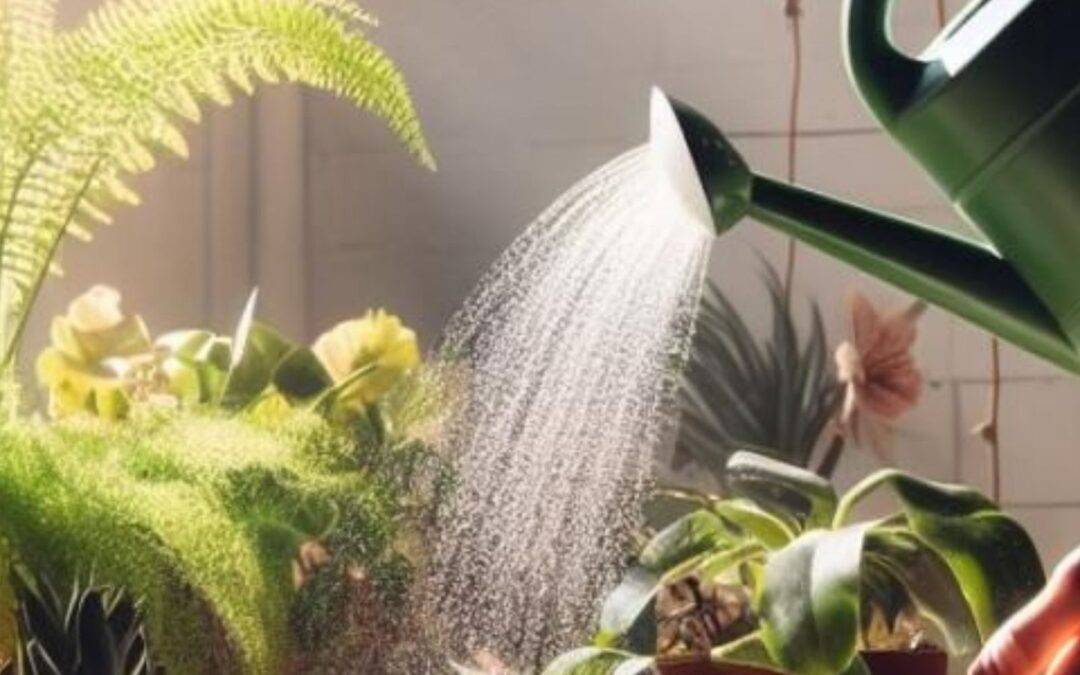Introduction
Watering plants at the right time is crucial for their health and growth. The ideal best time to water plants varies based on the season, plant type, and environmental conditions. Here’s a quick guide to help you determine the best times to water your plants throughout the year:
WHEN TO WATER PLANTS
Watering plants is one of the most essential aspects of plant care, but knowing when to water plants can make all the difference between a flourishing garden and one that struggles to thrive. Overwatering or underwatering can lead to a host of problems, from root rot to dehydration, ultimately harming your plants.
In this guide, we’ll explore the best times to water your plants, taking into account factors like the season, weather conditions, and the specific needs of different plant types. Whether you’re caring for houseplants, outdoor flowers, or vegetable gardens, understanding when to water is key to ensuring that your plants remain healthy, vibrant, and well-hydrated throughout the year. Let’s dive in and discover the optimal watering times for your plants.
When to Water Plants in Winter
In winter, plants typically require less frequent watering due to slower growth and cooler temperatures. However, it is still important to ensure that they receive the right amount of moisture during this time. The best time to water plants in winter is late morning to early afternoon, when the temperatures are warmer. Watering at this time allows the moisture to penetrate the soil before evening sets in, reducing the risk of freezing overnight, which can damage the roots.
It’s essential to avoid watering when temperatures drop below freezing, as water sitting on the soil or plant roots can freeze and harm your plants. Moreover, cold water hitting the roots in freezing temperatures can lead to root rot or other issues. If you’re caring for indoor plants during the winter months, be sure to water them only when the top inch of soil feels dry to the touch. Indoor plants often need less water during winter due to reduced light levels and cooler indoor conditions.
When to Water Plants in Summer
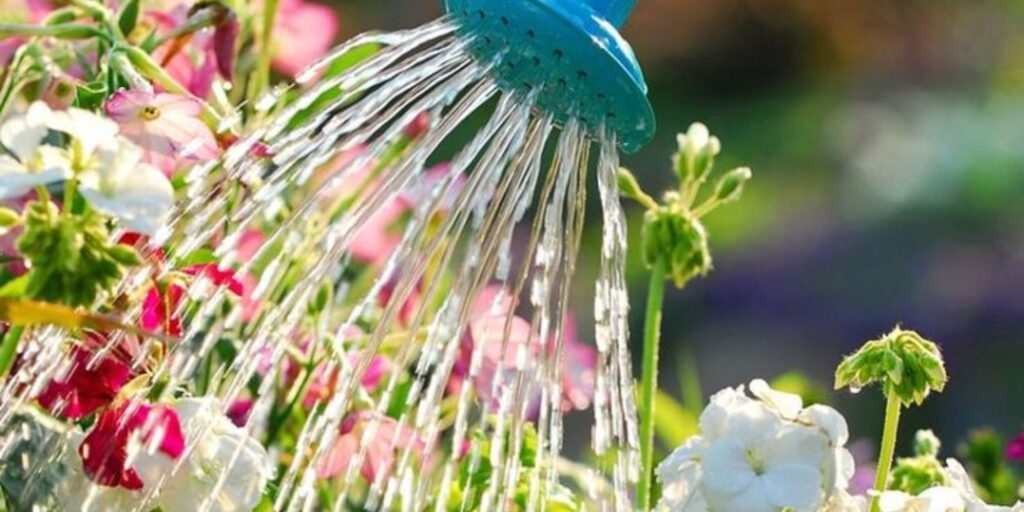
In summer, the hot temperatures and intense sunlight increase the evaporation rate of water, meaning plants often need more frequent hydration. The best time to water plants in summer is early in the morning, just as the sun begins to rise. This allows the water to soak deep into the soil before the heat of the day causes rapid evaporation. Early morning watering ensures that the plants receive the moisture they need to stay hydrated throughout the day, while also minimizing the risk of fungal diseases that can thrive when the leaves stay damp for too long.
Watering in the evening can also be effective, but it’s essential to avoid doing so too late. If plants remain wet overnight, the cool, damp conditions may encourage fungal infections and mold growth, particularly in areas with high humidity. While it’s important to water during the early or late parts of the day, it’s equally important to check the soil moisture before watering. If the soil feels moist a few inches down, it may not need another watering session.
During the hottest parts of summer, between 10 a.m. and 4 p.m., it’s best to avoid watering. At this time, the intense heat can cause water to evaporate quickly, making watering less effective. Additionally, watering during the heat of the day can cause thermal shock to your plants, as cold water on hot roots can stress them. By adjusting your watering routine to early mornings or late afternoons, you’ll ensure your plants receive optimal hydration and stay healthy throughout the summer.
When to Water Plant on Hot Days
On hot days, your plants require extra attention to ensure they stay hydrated and healthy. The best time to water is early in the morning, just as the sun rises. This time allows the water to soak deeply into the soil before the heat of the day causes it to evaporate. Morning watering gives plants a good start by providing moisture for the day ahead, helping them withstand the scorching temperatures. It also prevents the foliage from getting wet during the hottest part of the day, reducing the risk of fungal diseases.
If watering in the morning isn’t possible, you can also water late in the afternoon or early evening, when the sun begins to set. This timing helps the soil absorb moisture without losing too much to evaporation. However, be careful not to water too late, as damp conditions overnight can encourage mold and mildew growth. Avoid watering during the hottest hours of the day, typically between 10 a.m. and 4 p.m. The intense sunlight causes water to evaporate too quickly, making it ineffective. Additionally, watering at this time can shock your plants’ roots, potentially causing stress or damage. Adjusting your watering schedule to early morning or late afternoon ensures your plants stay properly hydrated on hot days.
When to Water Plant Morning Or Evening
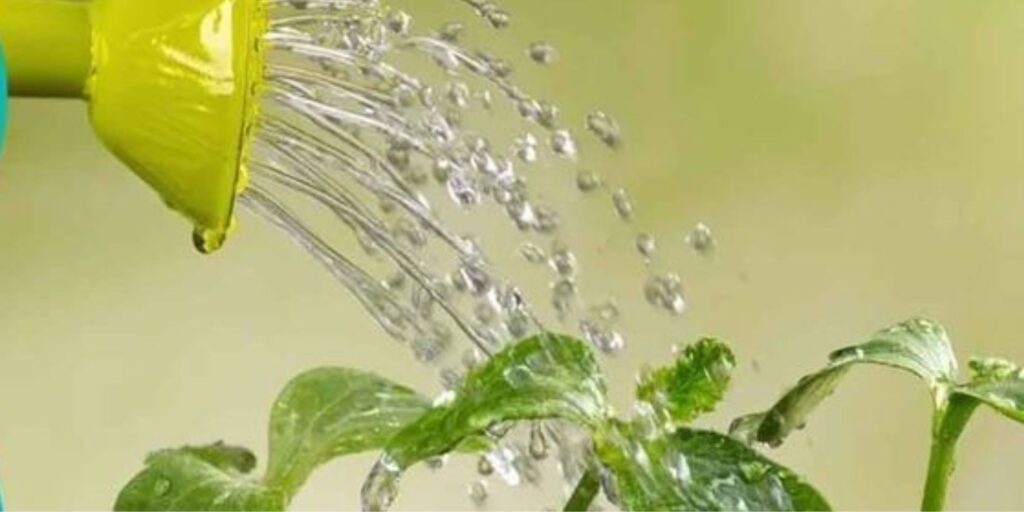
Watering plants in the morning is typically the best choice for most gardeners. The cooler temperatures at this time prevent water from evaporating too quickly, allowing the soil to absorb moisture deeply. When you water in the morning, plants have the entire day to dry off, reducing the risk of fungal diseases that thrive in damp conditions. Morning watering also helps plants get a good start, ensuring they are well-hydrated and prepared to face the heat of the day. By mid-morning, the sun’s warmth will help the soil dry, making it an ideal time to allow the water to reach the roots without sitting on the foliage.
On the other hand, watering in the evening works well, especially in hot weather. Evening watering allows moisture to stay in the soil overnight, helping plants survive through the night without drying out. However, watering too late can be problematic. If you water when the sun has set, the moisture may stay on the leaves and soil surface, leading to an increased risk of mildew and mold. While evening watering may seem like a good idea for reducing evaporation, it’s important to ensure your plants’ foliage can dry before nightfall. For the healthiest plants, choose early morning watering for the most effective results.
When to Water a Plant Before a Freeze
Before a freeze, it’s important to water your plants during the day, ideally in the late morning or early afternoon. Watering at this time ensures the moisture has time to reach the roots and provides a layer of insulation against the cold. Well-hydrated plants are better equipped to handle freezing temperatures, as water in the soil helps regulate temperature fluctuations. The moisture in the soil can act as a buffer, preventing the roots from freezing as quickly, which can otherwise damage or kill the plants. Watering too late in the day, however, can result in frozen water sitting on the soil overnight, causing potential damage.
Avoid watering your plants right before the temperature drops, especially in the evening or night. Watering late can leave moisture on the surface, where it freezes as temperatures plummet, potentially causing frost damage to both the plant roots and foliage. Additionally, if the water freezes before the plant can absorb it, it won’t provide the necessary protection. Instead, aim to water your plants a few hours before the expected freeze. This allows them to absorb the moisture, which will then help keep them protected during the cold night ahead. By timing your watering carefully before a freeze, you can help your plants survive harsh winter conditions.
When to Water Plants Indicator

Knowing when to water plants can sometimes be tricky, but several indicators can guide you. One of the most reliable signs is checking the soil moisture. Stick your finger about 1 to 2 inches into the soil. If it feels dry at this depth, it’s time to water. For plants in pots or containers, check the soil’s dryness more frequently, as potted plants tend to dry out faster. You can also use a moisture meter to measure the moisture level in the soil accurately, ensuring you don’t overwater or underwater your plants.
Another indicator to watch is the appearance of your plants. If the leaves start to droop or wilt, it’s often a sign that the plant is thirsty. However, don’t wait until this happens. It’s better to water the plant before it shows signs of stress. On the other hand, yellowing leaves or mushy, soft stems may indicate overwatering. Healthy plants will look vibrant and firm when they receive the right amount of water. By paying attention to these indicators, you can ensure your plants get the proper hydration they need for healthy growth.
When to Water Plants in Fall
In fall, plants generally require less water as the temperatures cool down and growth slows. However, they still need adequate moisture to prepare for the winter months. The best time to water plants in fall is during the early morning or late afternoon, similar to other seasons. Watering early in the day allows the soil to absorb moisture before the temperature drops, while evening watering provides hydration without risking evaporation in the cooler air. Avoid watering too late in the evening, as moisture left on the foliage can lead to fungal growth in the cooler nighttime temperatures.
As the days grow shorter, monitor your plants more closely for signs of dryness, as the fall weather can be unpredictable. Some plants may require watering less frequently during this season, while others may still need regular hydration, especially if there’s a dry spell. Check the soil for moisture depth before watering. If the soil feels dry a few inches below the surface, it’s time to water. Plants still need water to maintain their roots and prepare for the winter, so continue a consistent watering routine, adjusting for cooler weather.
When to Water Plant Moisture Meter
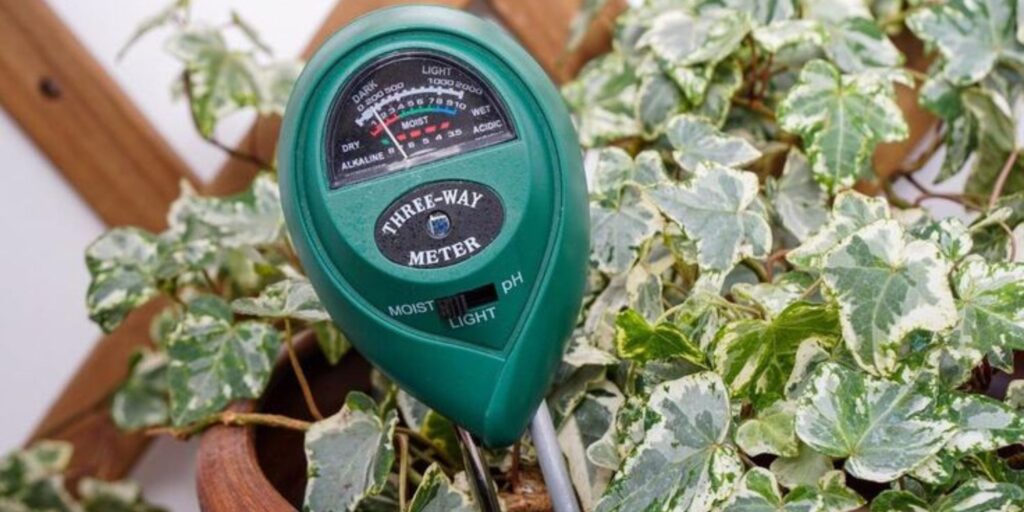
A moisture meter is a helpful tool to determine when to water your plants. It measures the moisture level in the soil, providing an accurate reading of the soil’s hydration. By inserting the probe into the soil, you can avoid guessing whether your plant needs water. For most plants, aim for a moisture level that’s neither too dry nor too wet. If the meter reads low, it indicates the soil is dry, and your plant likely needs water. If the reading shows high moisture, it means the soil is still wet, and you should wait before watering.
Using a moisture meter prevents overwatering or underwatering, both of which can harm plants. Overwatering can lead to root rot, while underwatering can cause wilting or stunted growth. It’s important to check the moisture meter regularly, especially in pots or containers, as these dry out faster than plants in the ground. Adjust your watering schedule based on the meter’s readings to keep your plants hydrated and healthy. A moisture meter helps take the guesswork out of watering, ensuring your plants receive the proper care they need.
Best Time to Water Plant in Winter
In winter, plants require less water due to slower growth and cooler temperatures, but they still need hydration. The best time to water plants in winter is late morning or early afternoon when the temperatures are warmer. Watering during this time ensures that the moisture has a chance to soak into the soil before the evening chill sets in. This prevents the water from freezing overnight, which could damage plant roots. Plants benefit from receiving water during the day when the sun is still out, allowing them to absorb the moisture effectively.
Avoid watering plants in the early morning or late evening during winter, as the colder temperatures can cause water to freeze quickly, leading to potential root damage. When the weather is too cold or when frost is expected, it’s best not to water at all. Instead, focus on adjusting your watering routine according to the plant’s needs and the weather forecast. Always check the soil moisture before watering, as overwatering during winter can lead to root rot. By watering at the right time and carefully monitoring moisture levels, you can help your plants survive the colder months.
Best Time to Water Plant in Summer
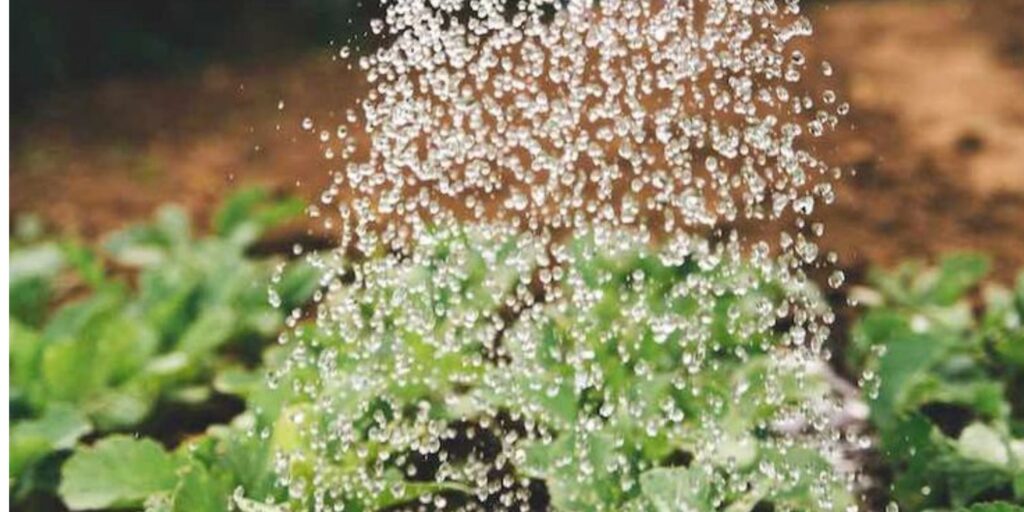
In summer, plants often require more water due to the heat and longer days. The best time to water plants in summer is early in the morning, before the sun gets too high. Watering at this time allows the moisture to reach the roots deeply before the heat causes evaporation. The cooler morning temperatures prevent water from quickly drying up, giving plants enough time to absorb the water they need. Additionally, watering in the morning ensures that the leaves and soil dry off before the sun becomes intense, reducing the risk of fungal diseases.
Avoid watering during the hottest parts of the day, typically between 10 a.m. and 4 p.m. At this time, the sun’s intensity causes water to evaporate rapidly, making watering less effective. Watering during these hours can also stress your plants by causing thermal shock to the roots if cold water is used. If morning watering isn’t possible, consider watering in the late afternoon or early evening, when temperatures begin to cool. This gives plants a chance to absorb water overnight, but be careful not to water too late, as damp conditions at night can promote fungal growth. Adjust your watering schedule to match the summer heat for healthy and thriving plants.
Worst Time to Water Plants
The worst time to water plants is during the hottest part of the day, typically between 10 a.m. and 4 p.m. At this time, the sun’s intense heat causes water to evaporate quickly, making it less effective for hydration. When you water during these hours, most of the water evaporates before reaching the roots, leaving your plants dry. Additionally, watering in the heat can stress plants, especially if cold water is applied. Sudden temperature changes from cold water on hot roots can shock the plant, affecting its growth and health.
Another poor time to water plants is during the evening when the temperature drops. If plants stay wet overnight, moisture on the leaves and soil can create a damp environment, promoting fungal growth and diseases like mold or mildew. This is particularly problematic in areas with high humidity. Watering late in the evening also prevents the soil from drying out before nightfall, which can suffocate the roots and lead to root rot. For healthier plants, avoid watering when the sun is at its peak or when it’s too late in the evening. Stick to early morning or late afternoon for the best results.
What is the Best Time to Water Plants in Hot Weather
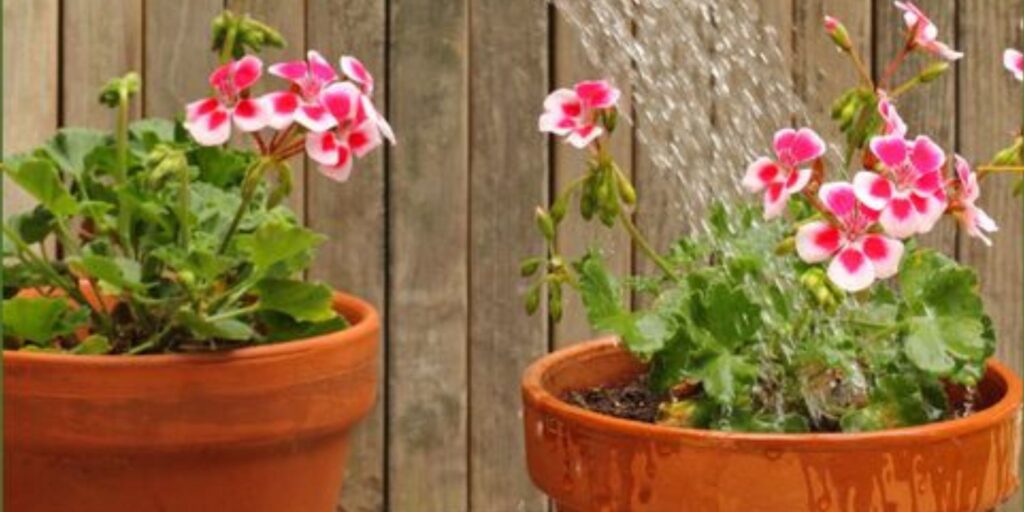
In hot weather, the best time to water plants is early in the morning, just as the sun begins to rise. During this time, the air is cooler, and the moisture has a better chance to soak into the soil before the heat causes it to evaporate. Watering early allows the plants to absorb the hydration they need throughout the day without wasting water to evaporation. Additionally, watering in the morning helps prevent thermal shock to the roots, as the temperatures are not as extreme as they would be during the midday heat.
If morning watering isn’t possible, the next best time is late afternoon or early evening. As the sun starts to set and temperatures drop, the risk of evaporation decreases. Late afternoon watering also allows the plants to stay hydrated through the night, ensuring they have enough moisture for cooler evening temperatures. However, avoid watering too late in the evening, as moisture left on the foliage can create a favorable environment for fungal growth. By adjusting your watering schedule to early morning or late afternoon during hot weather, you can help your plants survive the heat and stay healthy.
What is the Best Time to Water Plants in Cold Weather
In cold weather, the best time to water plants is late morning to early afternoon, when temperatures are at their highest for the day. During this time, the soil is warmer, and water has a chance to absorb before the evening chill sets in. Watering in the afternoon prevents moisture from freezing overnight, which can damage roots or cause the soil to become too compacted. By watering when temperatures are above freezing, you ensure the moisture reaches the plant roots and helps them stay hydrated throughout the cold night.
Avoid watering early in the morning or late in the evening during cold weather. Watering too early means the water may freeze before it can be absorbed by the plant. Watering in the evening also increases the risk of freezing, especially as temperatures drop rapidly after sunset. If the soil stays wet during freezing temperatures, it can harm the roots and disrupt the plant’s natural processes. To protect your plants during cold weather, water them at the right time of day and check the soil moisture before watering. By being mindful of the weather and timing, you can help your plants survive and thrive through the winter months.
Worst Time to Water Plants in Summer
The worst time to water plants in summer is during the hottest part of the day, typically between 10 a.m. and 4 p.m. During these hours, the sun’s intense heat causes water to evaporate rapidly, leaving little moisture for the plant roots to absorb. This means most of the water will be wasted, and the plant may not receive the hydration it needs. Additionally, watering in the heat can stress your plants. If you apply cold water to hot roots, it can shock the plant, disrupting its ability to properly absorb nutrients and moisture, which may hinder its growth.
Watering in the midday heat also increases the risk of leaf burn. When plants have wet leaves exposed to direct sunlight, the water droplets can act like magnifying glasses, focusing the sun’s rays onto the plant, potentially causing damage. Furthermore, wet foliage left in the heat can promote fungal growth and mildew. For these reasons, avoid watering during the hottest part of the day. Instead, water early in the morning or late in the evening when the temperatures are cooler, allowing the water to soak in properly without evaporating quickly. By watering at the right times, you can help your plants stay healthy and hydrated during the hot summer months.
Worst Time to Water Plants in Winter

The worst time to water plants in winter is early morning, especially when temperatures are below freezing. When you water plants early in the morning, the moisture can freeze on the surface of the soil or on the plant’s roots. Frozen water can cause significant damage to plant roots, harming their ability to absorb nutrients and water properly. Additionally, water left on the foliage in freezing temperatures can lead to frost damage, especially on delicate or young plants. It’s best to avoid watering until the temperature warms up later in the day.
Another poor time to water plants in winter is late in the evening. Watering too late can leave the moisture sitting on the soil and plants overnight, which can lead to freezing. If the soil remains wet and temperatures drop, this increases the risk of root rot or other plant diseases. Watering late also prevents the plants from drying off before the night’s chill, leaving them vulnerable to cold damage. Instead, water during the late morning or early afternoon, when temperatures are warmer. This ensures that the water has time to reach the roots and hydrate the plants before the cold sets in. By carefully timing your watering, you can protect your plants from the harsh winter conditions.
Best time to Water indoor Plants
In winter, the best time to water indoor plants is in the late morning or early afternoon when the temperatures are slightly warmer. Indoor plants still need hydration during the winter months, but they don’t require as much as in the warmer seasons. Watering in the late morning allows the soil to absorb moisture before the cooler evening temperatures cause the water to sit too long. It also gives the plants enough time to absorb moisture before the indoor heating systems dry out the air, making it more difficult for the plants to retain water.
Avoid watering your indoor plants in the evening during winter, as the lower nighttime temperatures can cause the moisture to stay in the soil longer than needed. Excess moisture in the soil during the cold can lead to root rot, which is harmful to plant health. Additionally, watering in the evening can leave the plant’s leaves damp overnight, potentially encouraging fungal growth. Instead, aim to water when temperatures are slightly warmer and before the day’s light fades. This ensures the plants stay hydrated without the risk of freezing or overwatering. By choosing the right time to water, you can keep your indoor plants healthy and thriving through the winter months.
Best time to Water Potted Plants
The best time to water potted plants is early in the morning, just as the sun rises. During this time, the temperatures are cooler, and the water has a better chance to soak deep into the soil. Watering early allows the plant roots to absorb moisture before the heat of the day causes evaporation. This timing ensures that the potted plant remains hydrated throughout the day, helping it thrive. Additionally, watering in the morning prevents the plant’s leaves from staying damp for too long, reducing the risk of fungal diseases and mold growth.
If morning watering is not possible, the next best option is late afternoon or early evening, when the temperatures cool down. This timing gives the plant a chance to absorb moisture before the temperature drops too low at night. However, avoid watering too late in the evening, as it can leave moisture on the plant overnight, which can encourage fungal issues. Potted plants tend to dry out faster than ground plants due to their limited soil space, so adjusting your watering schedule to early morning or late afternoon ensures your plants get the right amount of moisture without the risk of overwatering or under-watering.
How often to Water Plants
How often to water plants depends on several factors, including the plant type, pot size, and environmental conditions. Generally, most plants need watering when the top inch or two of soil feels dry. For indoor plants, watering every 7 to 10 days is common, but this can vary based on temperature and humidity levels. In hotter months or dry conditions, plants may need more frequent watering, while in cooler or more humid environments, you may need to water less often. Always check the moisture level of the soil before watering to avoid overwatering.
For outdoor plants, the watering frequency depends on the weather, soil type, and plant variety. In the summer, plants in the garden or lawn may need watering every 2 to 3 days, especially during hot, dry spells. During cooler months or rainy seasons, watering may only be necessary once a week or less. The key is to monitor soil moisture regularly and adjust the watering schedule based on how quickly the soil dries out. Overwatering or underwatering can both stress plants, so it’s important to find a balance. By understanding your plants’ specific needs and environmental conditions, you can determine the ideal watering frequency for healthy growth.
Why Evening is the Best time to Water Plants
Evening can be the best time to water plants, especially in hot weather. As the sun sets and temperatures drop, evaporation slows down, allowing the water to stay in the soil longer. This gives plants more time to absorb moisture without losing it to the heat of the day. Watering in the evening ensures that the plant roots get sufficient hydration overnight, helping the plant stay strong and healthy during the day. Additionally, watering in the evening helps plants avoid the midday heat stress, especially for delicate species that may struggle in intense sunlight.
However, it’s important not to water too late into the evening. If you water too close to nighttime, the moisture may remain on the leaves overnight, creating a damp environment that can encourage fungal growth. As long as you water early enough in the evening, before the temperatures drop too much, it can be an excellent way to ensure your plants stay hydrated without risking excessive evaporation. Evening watering is particularly beneficial for plants that require consistent moisture or those that are in pots, where soil tends to dry out more quickly. By adjusting your watering routine to the evening, you can help your plants thrive, especially during hot or dry spells.
Worst time to Water Vegetable Plant

The worst time to water vegetable plants is during the midday heat, typically between 10 a.m. and 4 p.m. During these hours, the sun’s intense rays cause water to evaporate quickly, meaning most of the moisture will not reach the roots. Watering at this time wastes water and makes it harder for the plants to absorb the hydration they need. Additionally, watering in the heat can shock the plant, especially if cold water hits hot soil or roots. This stress can stunt the plant’s growth and harm its overall health.
Another bad time to water vegetable plants is late in the evening or at night. If the soil stays damp overnight, it creates a damp environment that encourages fungal diseases and mold growth, which can damage the plants. Watering too late also prevents the soil from drying properly, leading to root rot and other problems associated with excess moisture. For vegetable plants, the best times to water are early morning or late afternoon when the temperatures are cooler. These times help ensure that the plants get enough water without the risks associated with watering at the wrong time of day.
What month do you stop Watering Plants
The month when you stop watering plants depends on the climate and the type of plants you are growing. In colder regions, many outdoor plants, especially perennials, stop growing in late fall, usually around October or November. As temperatures drop and the days shorten, plant growth slows down, and the plants enter a dormant state. At this point, reduce watering significantly, as the plants require less moisture. In areas with freezing temperatures, it’s important to stop watering completely by late fall to avoid the risk of water freezing in the soil, which can damage the roots.
For indoor plants, watering schedules can vary, but generally, you may need to water less frequently during the colder months of November through February. Indoor plants typically grow more slowly during the winter due to reduced light levels and cooler indoor temperatures. It’s important to check the moisture level of the soil before watering. If the soil feels dry a few inches below the surface, water the plant, but be cautious not to overwater, as excess moisture can lead to root rot. For most plants, it’s not about completely stopping watering, but rather adjusting to a more conservative schedule based on the plant’s needs and environmental conditions.
Conclusion

In conclusion, knowing when to water plants is essential for their health and growth. The ideal watering time varies depending on the season, weather, and type of plant. During warmer months, watering in the early morning or late afternoon helps prevent rapid evaporation and ensures that plants absorb moisture effectively. In winter, it’s best to water later in the day when temperatures are warmer to avoid frozen water, while in summer, early mornings offer the best conditions to keep plants hydrated. For indoor and potted plants, adjusting the watering schedule according to temperature changes and humidity levels is crucial for preventing overwatering or underwatering.
By paying attention to the specific needs of your plants and monitoring environmental factors, you can create an optimal watering routine. Avoid watering during the hottest parts of the day or late at night to reduce the risk of root damage or fungal growth. Ultimately, the key is to be mindful of soil moisture, the plant’s growth cycle, and weather patterns to ensure your plants stay healthy and thrive year-round.

